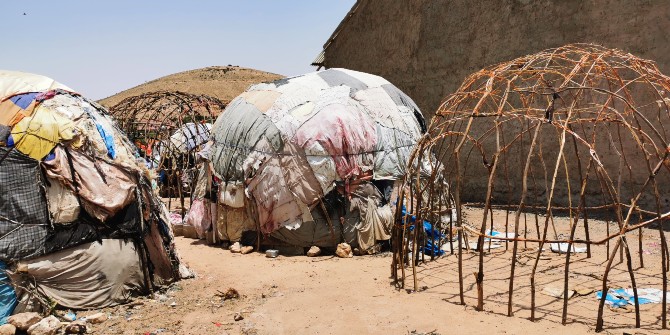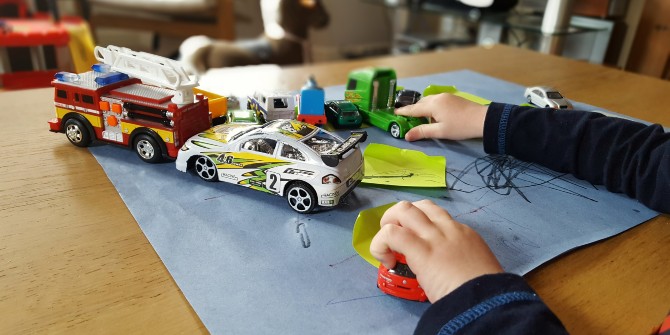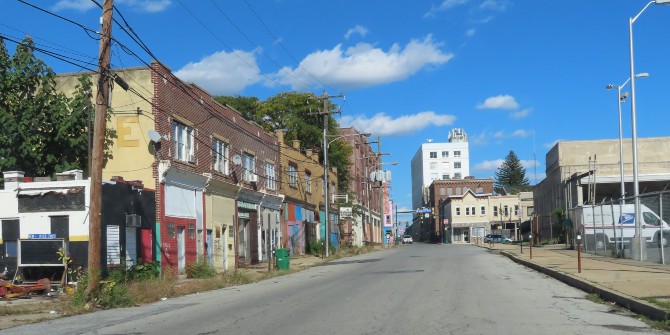Synne Bergby and Ida Z Lien (Urban-A) say the way we plan cities and the powers they have are crucial to understand in dealing with all kinds of humanitarian crises – not just COVID-19.
Synne Bergby and Ida Z Lien are responding to Romola Sanyal’s LSE Festival talk, After COVID, What Next for Urban Humanitarian Responses?
COVID-19 has put extra strain on displaced people living in urban areas, and compounded the hardship of poor urban communities. Densely-populated and poorly-serviced city areas have seen a higher share of infections, while measures to halt the spread of the virus have disproportionately affected marginalised city dwellers, especially families dependent on jobs in the informal sector. Romola Sanyal points to some of the institutional and systemic barriers that make it hard for cities to respond to these challenges, and says refugees and the internally displaced should play a bigger part in humanitarian interventions.
She outlines four suggestions: lifting restrictions and sanctions on displaced populations; including the displaced in the national population census; including community groups when tackling COVID-19 (and encouraging them to work with the displaced); and bringing refugees and the internally displaced into COVID-19 response planning. These proposals highlight the principles of accountability, inclusion, and equity. But the question of how they should be embedded in urban recovery design – and by whom – needs further unpacking.
COVID-19 is only part of the picture

Urban crises and urban displacement are increasingly protracted. The urban displaced often live among poor host communities which already suffer from inadequate and unaffordable basic and social services, and a lack of sustainable ways to earn a living. New shocks, such as COVID-19, require an immediate response. But the danger is that such interventions, if not linked to a larger system, only offer temporarily relief to open-ended humanitarian situations. Successful interventions must therefore think about resilience and longer-term development as well as the immediate crisis. This is daunting, but it also opens up opportunities for a strategic response that goes beyond short-lived and repetitive humanitarian interventions.
Look beyond municipal boundaries
Urban crises and shocks like COVID-19 affect urban systems and governance at numerous geographic scales: from the neighbourhood, through to the city, to regional and national levels. They all need to be captured in urban data and analysis. At the city level, local authorities and service providers, are critical first responders, and understanding how they are constrained by fiscal and staffing limitations – as well as the history and politics that favour some districts over others – is vital. At the neighbourhood level, it is crucial to involve local communities and give them the capacity to respond – including displaced populations. Our ongoing research on COVID-19 measures in Nairobi suggests that it is sometimes the lack of information, rather than a lack of resilience, that represents the greatest obstacle for the urban poor in response to new shocks. At the regional and national levels, the current legislative frameworks for urban management, planning, and service systems need in-depth analysis. Many of the root causes of displacement, poverty, and urban crises go beyond municipal boundaries, and tackling them requires a broader geographical lens.
Local authorities need new ways to raise funds
Resilience to shocks is strongly linked with socio-economic factors. Crises, such as COVID-19 and economic recessions, will over time cut local authorities’ revenues and their ability to provide services. At the same time, people’s needs are most acute and their ability to pay for private service alternatives is limited. The world has seen a rise in protracted and large-scale urban humanitarian crises, just when there is less funding available to respond to them. This means cities need to identify ways to boost local economic development through labour-intensive and regenerative value chains, improved financing models for the collection and redistribution of revenues by local authorities, and innovative public-private partnerships.
In order to tackle deep-seated humanitarian crises effectively, we need to understand how they affect the geographical scales, systems and governance structures that make up cities, and design interventions along the human-development continuum.
This post represents the views of the authors and not those of the COVID-19 blog, nor LSE.





